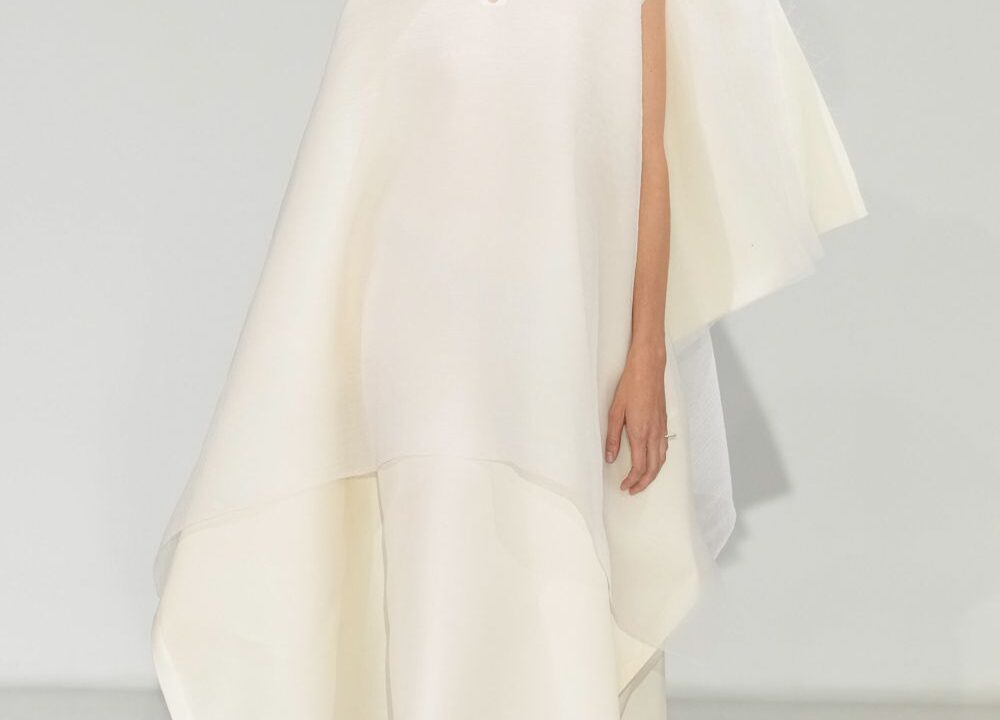Freya Dalsjø’s runway comeback was nothing short of a spiritual experience—fittingly held in Copenhagen Fashion Week’s new venue, a former church. Her slow, processional collection celebrated craftsmanship and materials, marking a rebirth for the designer.
Dalsjø launched her brand in 2012 after leaving Antwerp’s Royal Academy of Arts and returning to Denmark to hone her skills. Supported by the Danish Arts Foundation over the years, she stepped back from fashion shows during the pandemic, explaining, “I needed to rethink how I wanted to do things.” This reflection reshaped both her business and aesthetic. Today’s collection was refined to pure essentials—timeless pieces built on simple shapes and striking proportions.
The show opened with an ethereal silk gazar dress, its raw edges floating like paper. A double-faced cashmere scarf carried the quiet elegance of vestments, while other designs cocooned the body with protective ease. Playful moments emerged in leather pieces with painted tips, swaying like flower stamens.
Geometry turned poetic in a cape and skirt made from hundreds of interlocking leather squares, their delicate cutouts creating movement. Wooden carvings chimed softly as models walked, and chocolate lambskin trousers revealed nearly invisible folds. Nature’s wild beauty inspired woven pieces resembling lichen-covered bark, while the finale nodded to Danish and Japanese basketry traditions.
Like Phoebe Philo, Dalsjø designs for women—not girls—a rarity in fashion. This collection embraced time rather than chasing it, inviting wearers to lose themselves in meticulous craftsmanship. “Every piece is time-consuming, but worth it,” she said. “I love exploring techniques, materials, and textures in new ways.”
Her return to the spotlight, on her own terms, joins two other female designers making comebacks this season—a notable shift in an industry still dominated by male creative directors.
“It takes years to know what you truly want and develop the skills,” Dalsjø reflected. A champion of slow fashion, she added, “You can feel it in the collection—the craftsmanship, the relaxed silhouettes, the comfort. Clothes should let you move and breathe.”
